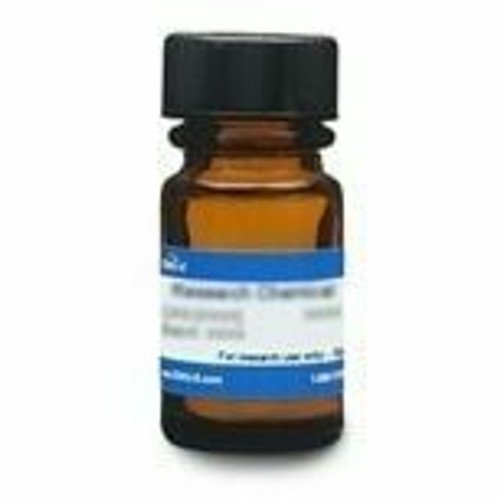Delamanid is a dihydro-nitroimidazooxazole derivative. It is an antimicobacterial compound used for Mycobacterium tuberculosis (Mtb), the causal agent of tuberculosis. Delamanid is a pro-drug which is activated ty the enzyme deazaflavin dependent nitroreductase (Rv3547). It can be used in preclinical models such as the zebrafish-embryo model by providing an early in vivo infection model for compound evaluation. Further research is needed in order to translate the results seen in zebrafish models. Preclinical and clinical studies have shown that it has high potency, lower risk for interactions with other compounds, and a favorable toxicity profile. Approved in 2014 in Europe and Japan, Delamanid is marketed by Otsuka Pharmaceutical.
Delamanid is soluble in DMSO but practically insoluble in water.
| Mechanism of Action | Delamanid is a mycobacterial cell wall synthesis inhibitor, inhibiting the synthesis of methoxy mycolic acid, a long-chain fatty acid in the M. tuberculosis cell wall. It also inhibits ketomycolic acid. A reactive intermediate metabolite formed between Delamanid and desnitro-imidazooxazole derivative, is thought to play a role in inhibiting mycolic acid production. |
| Spectrum | Dalamanid can be used for Mycobacterium tuberculosis, including multidrug-resistant tuberculosis (MDR-TB). MDR-TB is defined as resistance to Isoniazid and Rifampicin. It is also effective for drug-susceptible strains of M. tuberculosis. |
| Molecular Formula | C25H25F3N4O6 |
| Microbiology Applications |
Finding new anti-tuberculosis compounds with in vivo activity is an ongoing challenge. Using the zebrafish embryo infection model with M. marinum as a surrogate for M. tuberculosis and a set of clinical compounds, authors demonstrated that this model could predictive and selective for antibiotics. 240 compounds were screened for in vivo activity and 14 highly active compounds were identified including Delamanid ( along with Bedaquiline, Ethionamide, Pretomanid, and Rifampicin). These compounds resulted in a significant reduction of bacterial signal. This study stresses the importance of incorporating early in vivo models in the compound discovery pipeline (Habjan et al, 2021). Delamanid can be used in susceptibility testing of M. tuberculosis using the resazurin microtitre assay (REMA) and the BACTEC MGIT 960 system. Results showed that the REMA nad MGIT can be used to rapidly and accurately determine Delamanid MIC showing concordance with the solid agar reference method. In addition, whole genome sequencing was used to identify resistance in 2 genes (ddn, fbiA) that are involved in delamanid activation (Schena et al, 2016).
|
| References |
Habjan E et al (2021) An anti-tuberculosis compound screen using a zebrafish infection model identifies an aspartyl-tRNA synthetase inhibitor. Dis Model Mech. 14(12). doi: 10.1242/dmm.049145. PMID 34643222 Schena E et al (2016) Delamanid susceptibility testing of Mycbacterium tuberculosis using the resazurin microtitre assay and the BACTEC(TM) MGIT(TM) 960 system. J. Antimicrob. Chemother. 71(6):1532-1539 PMID 27076101 Xavier AS and Lakshmanan M (2014) Delamanid: A new armor in combating drug-resistant tuberculosis. J Pharmacol. Pharmacother. 5(3):222-224. PMID 25210407 |


